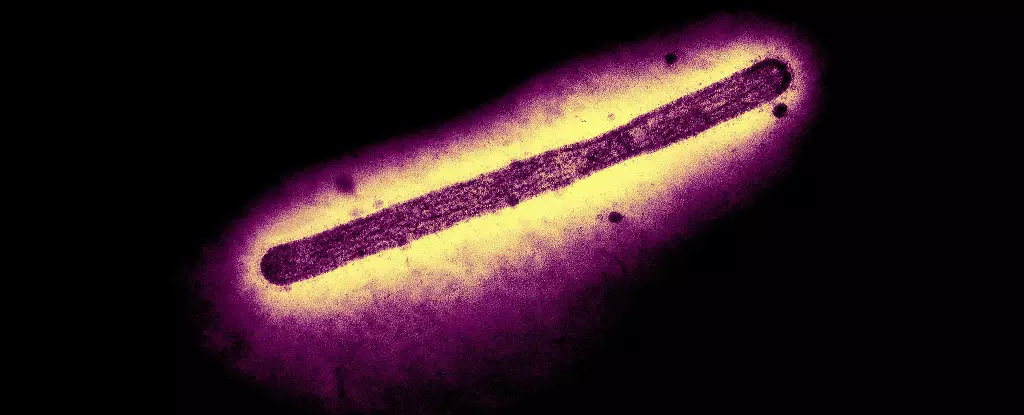The recent surge in bird flu cases across the United States has raised considerable alarm among health experts. As the H5N1 strain of avian influenza continues to proliferate, the potential implications for both animal and human health have come under intense scrutiny. Notably, the emergence of infections in domestic pets, particularly cats, has added an unsettling dimension to the ongoing crisis. This article delves into the latest developments surrounding the bird flu outbreak, explores its mutations, and discusses the risks posed to humans and pets.
The Mutation of H5N1 and Its Potential Impact on Human Health
The Centers for Disease Control and Prevention (CDC) recently reported a troubling case involving an elderly patient in Louisiana who was admitted in critical condition due to severe H5N1 infection. Analysis of the viral sample taken from the patient indicated that the virus had begun to mutate in a way that might enhance its affinity for human respiratory cells. This finding raises concerns about the virus’s potential to become more transmissible among humans. However, the CDC has clarified that these mutations seem to have originated from the patient’s own viral replication, not through transmission from birds, which is the usual source of infection.
Experts remain cautious about the implications of these mutations. Virologist Angela Rasmussen emphasized that while the mutations allow for easier entry into human cells, it remains unclear if they will render the virus significantly more dangerous or contagious. Previous instances of similar mutations in critically ill patients did not result in widespread outbreaks. This suggests a cautious optimism, as the pathway from a mutated strain to a pandemic is fraught with complexities involving multiple factors affecting viral transmission.
While mutations in the H5N1 strain may enhance its ability to bind to receptors in human upper respiratory tracts, this adaptation alone is insufficient for increasing transmissibility between individuals. As highlighted by Thijs Kuiken, a virologist from Erasmus University in the Netherlands, efficient binding is just one of many factors essential for successful viral replication and transmission. In fact, such adaptations may lead to milder infections characterized by symptoms similar to those of common seasonal illnesses, rather than severe respiratory conditions that necessitate hospitalization.
The size of the bird flu outbreak also poses significant risks, particularly with the CDC reporting at least 65 confirmed cases of human infection in 2024 alone. Many other cases might not be detected, especially among individuals working closely with birds, such as poultry and dairy workers. This widespread prevalence of the virus increases the likelihood of genetic reassortment with seasonal influenza strains, which could result in unexpected and rapid changes to the virus’s genetic makeup. Such shifts have historically precipitated significant flu pandemics, making vigilant monitoring crucial.
Adding to the alarm surrounding bird flu is the emerging evidence of infections among domestic cats. A recent incident in Oregon saw an indoor cat tragically succumb to the virus after consuming contaminated raw pet food, highlighting how household pets can become inadvertent carriers of highly pathogenic influenza strains. Follow-up genome sequencing confirmed that the virus identified in the pet food matched that of the strain responsible for the cat’s infection.
This incident raises important questions about the safety of pet foods, particularly those marketed as raw or minimally processed. State officials have urged pet owners to exercise extreme caution, especially in areas known to have active bird flu cases. The concern extends beyond just one infected cat; reports of deaths among big cats in sanctuaries further illustrate the potential for avian influenza to affect a broader range of domestic and wild feline populations.
As the situation with bird flu continues to evolve, health authorities and experts stress the importance of vigilance and preparedness. Monitoring and controlling outbreaks in both birds and mammals will be essential to prevent transmission to humans. People, especially those working in close proximity to potential carriers, should maintain high standards of hygiene and be aware of the symptoms associated with avian influenza.
While the mutations observed in the recent case of bird flu are a source of concern, they do not currently signify an imminent threat of a pandemic. Continuing research is necessary to understand the dynamics of this virus, and public health strategies will need to adapt as more information comes to light. The intersection of human and animal health in this context highlights the complexity of managing infectious diseases in our interconnected world and underscores the need for a collaborative approach to public health.


Leave a Reply